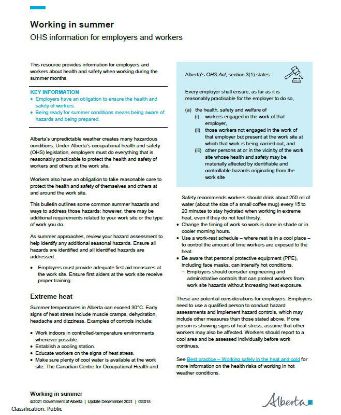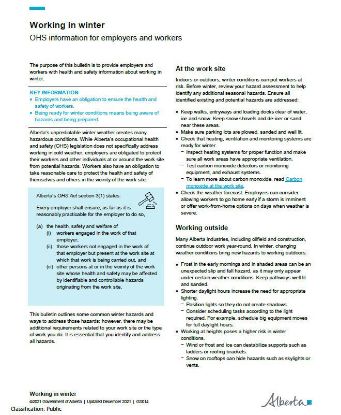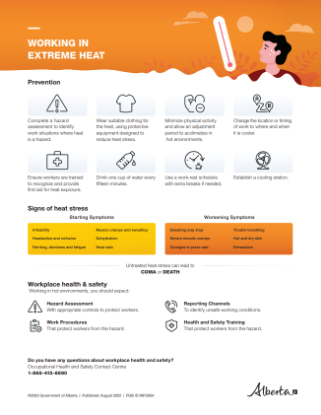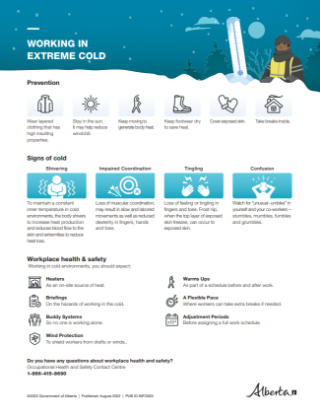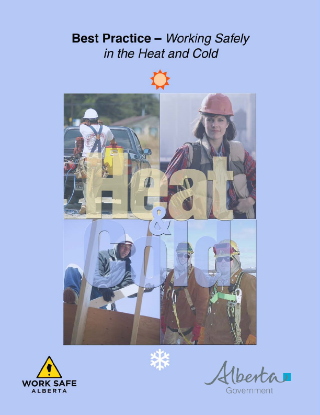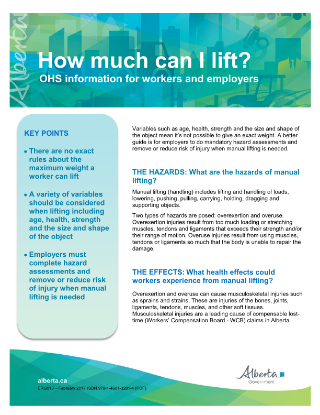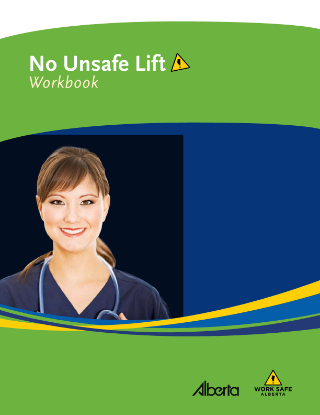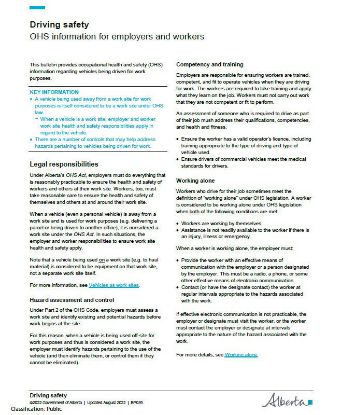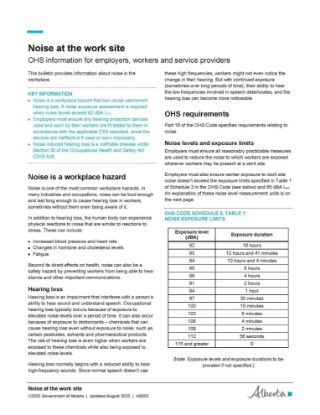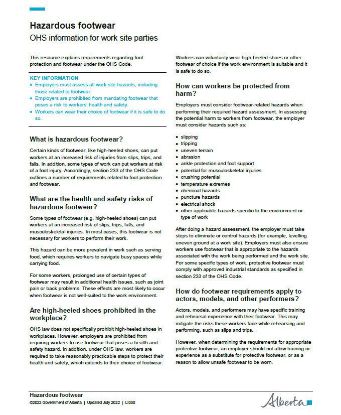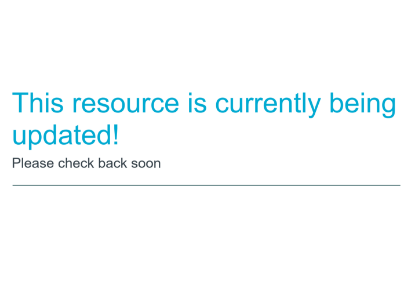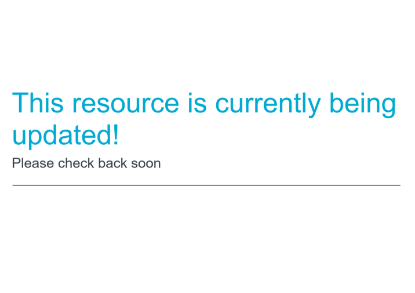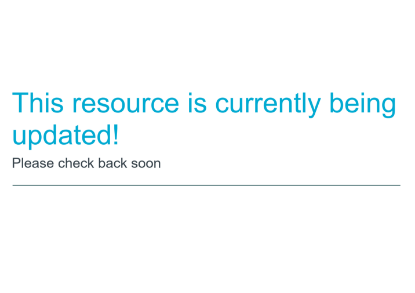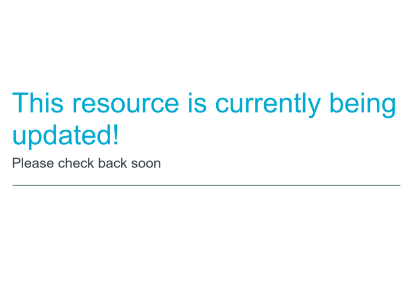You have no items in your order.
Hazards: physical
Working in physically hazardous situations - alone, on ice, in heat and cold, in noise – as well as materials handling, vibration, and more.
Working alone
WA002
Explains the meaning of working alone as defined in Alberta's OHS Code, as well as the legislated requirements for employers of workers working alone.
UPDATED: July 2022
UPDATED: July 2022
Working in summer
GS015
This bulletin provides employers and workers with health and safety information about working in summer.
UPDATED: December 2021
UPDATED: December 2021
Working in winter
GS014
This bulletin provides employers and workers with health and safety information about working in winter.
UPDATED: December 2021
UPDATED: December 2021
Working in extreme heat
INFO004
Infographic on the health risks associated with working in the heat, what to watch for, and how to prevent heat stress.
UPDATED: August 2022
UPDATED: August 2022
Working in extreme cold
INFO003
Infographic on the health risks associated with working in the cold, what to watch for, and how to prevent cold stress.
UPDATED: August 2022
UPDATED: August 2022
Best Practice: Working Safely in the Heat and Cold
GS006
***This resource is current to July 2014.
For information on the latest OHS requirements, visit OHS website.***
Explains the health risks associated with working in extreme heat and cold situations and suggested controls.
PUBLISHED: July 2014
For information on the latest OHS requirements, visit OHS website.***
Explains the health risks associated with working in extreme heat and cold situations and suggested controls.
PUBLISHED: July 2014
How much can I lift?
ERG013
Discusses the hazards of manual lifting, health effects and suggested controls.
PUBLISHED: February 2017
PUBLISHED: February 2017
No Unsafe Lift Workbook
BCL007
***This resource is current to January 1, 2008.
For information on the latest OHS requirements, visit OHS website.***
Provides a framework for healthcare employers to develop and implement comprehensive musculoskeletal injury prevention programs for their facilities.
PUBLISHED: January 1, 2008
For information on the latest OHS requirements, visit OHS website.***
Provides a framework for healthcare employers to develop and implement comprehensive musculoskeletal injury prevention programs for their facilities.
PUBLISHED: January 1, 2008
Driving safety
BP039
This bulletin outlines some common driving hazards and controls to help address those hazards.
UPDATED: August 2022
UPDATED: August 2022
Noise at the work site
HS003
Discusses noise as a common workplace hazard, including information about associated health effects and exposure limits, implementing a noise management program, audiometric testing, and educating workers.
UPDATED: August 2023
UPDATED: August 2023
Hazardous footwear
LI050
Explains requirements regarding employer-imposed footwear under the OHS Code.
UPDATED: July 2022
UPDATED: July 2022
Working on ice - Best practices for building and working safely on ice covers in Alberta
SH010
***This resource is currently being updated ***
Addresses hazards and controls, as well as design, monitoring and maintenance for the construction and operation of transportation facilities and working platforms on floating ice.
Addresses hazards and controls, as well as design, monitoring and maintenance for the construction and operation of transportation facilities and working platforms on floating ice.
Working on ice - Field guide to working safely on ice covers
SH011
***This resource is currently being updated***
An OHS guide for people who work on freshwater floating ice covers. It is based on the Government of Alberta’s Best Practice for Building and Working Safely on Ice Covers in Alberta.
An OHS guide for people who work on freshwater floating ice covers. It is based on the Government of Alberta’s Best Practice for Building and Working Safely on Ice Covers in Alberta.
Working on ice - Ice cover inspection template
SH011TMP
***This resource is currently being updated***
A template to help assess if a floating ice surface is safe for work.
A template to help assess if a floating ice surface is safe for work.
Working on ice - Ice cover profile template
SH011TMP2
***This resource is currently being updated***
A template for recording the details of ice cover such as measurements, colour, and location.
A template for recording the details of ice cover such as measurements, colour, and location.
- 1
- 2

